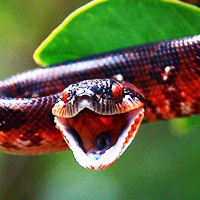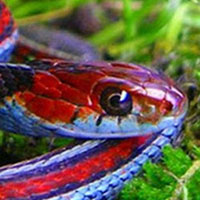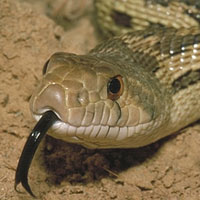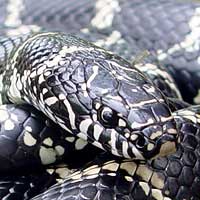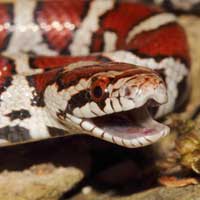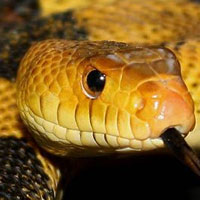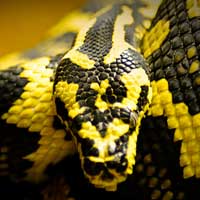Mole Kingsnake: Everything You Need to Know About This Reclusive Reptile
The scientific name of the Mole Kingsnake is Lampropeltis calligaster rhombomaculata. It belongs to the Colubridae family, which is the largest family of snakes, including many non-venomous and mildly venomous species.
Scientific Name: Lampropeltis calligaster rhombomaculata
Snake Family: Colubridae
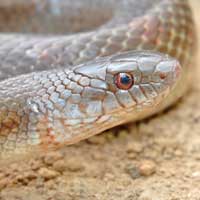
Introduction to the Mole Kingsnake
The Mole Kingsnake (Lampropeltis calligaster rhombomaculata) is a secretive and fascinating species of kingsnake. Native to the southeastern United States, it is known for its subdued coloration and burrowing habits. This non-venomous snake is an excellent pest controller, preying on rodents and other small animals. Its reclusive nature makes it less commonly seen, but it is a rewarding pet for dedicated reptile enthusiasts.
Where Does the Mole Kingsnake Live?
The Mole Kingsnake thrives in regions with loose, sandy soils that allow it to burrow effectively. It can be found in a variety of habitats across its range in the southeastern United States.
Preferred Habitat Features:
- Forests and woodlands
- Scrublands
- Grasslands with sandy soils
- Suburban areas near fields and gardens
| Region | Habitat Type | Key Features |
|---|---|---|
| Southeastern USA | Forests and woodlands | Loose soil, shaded areas |
| Mid-Atlantic States | Scrublands | Sparse vegetation, sandy terrain |
| Southern USA | Grasslands | Open fields with burrowing potential |
What Does the Mole Kingsnake Eat?
The Mole Kingsnake is a carnivorous predator with a diet that reflects its burrowing and nocturnal habits. It preys on small animals it encounters underground or in its natural habitat.
Common Diet:
- Rodents such as mice and small rats
- Lizards
- Frogs and toads
- Small invertebrates
In captivity, feeding frozen-thawed rodents is recommended for safety and convenience. Juvenile Mole Kingsnakes should be fed every 5-7 days, while adults require feeding every 10-14 days.
Behavior and Temperament of the Mole Kingsnake
The Mole Kingsnake is known for its secretive and shy nature. It spends much of its time underground, making it less visible compared to other kingsnake species.
Key Behavioral Traits:
- Reclusive and burrowing
- Primarily nocturnal, active during the night
- Non-aggressive but may exhibit defensive behaviors when threatened
- Prefers to avoid human interaction unless accustomed to handling
With consistent handling and a calm environment, the Mole Kingsnake can adapt to captivity, although it may remain more reserved than other species.
Health and Lifespan of the Mole Kingsnake
The Mole Kingsnake is a hardy species with a lifespan of 12-15 years in captivity when properly cared for. Regular monitoring of its health and habitat is essential to ensure longevity.
Common Health Concerns:
- Respiratory infections caused by improper humidity
- Shedding issues due to low humidity
- Internal and external parasites
Maintain a temperature gradient of 75-85°F, provide fresh water for hydration and soaking, and ensure a clean environment to prevent health issues. Regular check-ups with a reptile veterinarian are recommended.
Reproductive Traits of the Mole Kingsnake
The Mole Kingsnake is oviparous, laying eggs after mating. Reproduction typically occurs in the spring, with females laying eggs in early summer.
Reproductive Details:
- Mating season: Spring
- Clutch size: 4-10 eggs
- Incubation period: 50-70 days
- Hatchlings are independent at birth
In captivity, successful breeding requires simulating natural seasonal changes and providing a suitable nesting area. Eggs should be incubated at 82-85°F for optimal hatching.
How to Handle and Care for the Mole Kingsnake
Caring for the Mole Kingsnake involves creating a habitat that mimics its natural environment and providing consistent, gentle handling to reduce stress.
Handling and Care Tips:
- Handle gently and infrequently to minimize stress
- Provide a deep substrate for burrowing
- Maintain proper humidity and temperature levels
- Offer a varied diet of appropriately sized prey
With proper care and attention, the Mole Kingsnake can thrive in captivity, offering a unique and rewarding experience for reptile enthusiasts.
Other Snakes In This Species
 Albino California Kingsnake
Albino California Kingsnake Arizona Mountain Kingsnake
Arizona Mountain Kingsnake Black Kingsnake
Black Kingsnake Brooks Kingsnake
Brooks Kingsnake California Kingsnake
California Kingsnake Desert Kingsnake
Desert Kingsnake Dot-Dash California Kingsnake
Dot-Dash California Kingsnake Durango Mountain Kingsnake
Durango Mountain Kingsnake Eastern Kingsnake
Eastern Kingsnake Florida Kingsnake
Florida Kingsnake Florida Mole Kingsnake
Florida Mole Kingsnake Goins Kingsnake
Goins Kingsnake Gray Banded Kingsnake
Gray Banded Kingsnake Mexican Black Kingsnake
Mexican Black Kingsnake Mole Kingsnake
Mole Kingsnake Prairie Kingsnake
Prairie Kingsnake Ruthvens Kingsnake
Ruthvens Kingsnake Scarlet Kingsnake
Scarlet Kingsnake Speckled Kingsnake
Speckled Kingsnake Utah Mountain Kingsnake
Utah Mountain Kingsnake Variable Kingsnake
Variable Kingsnake
